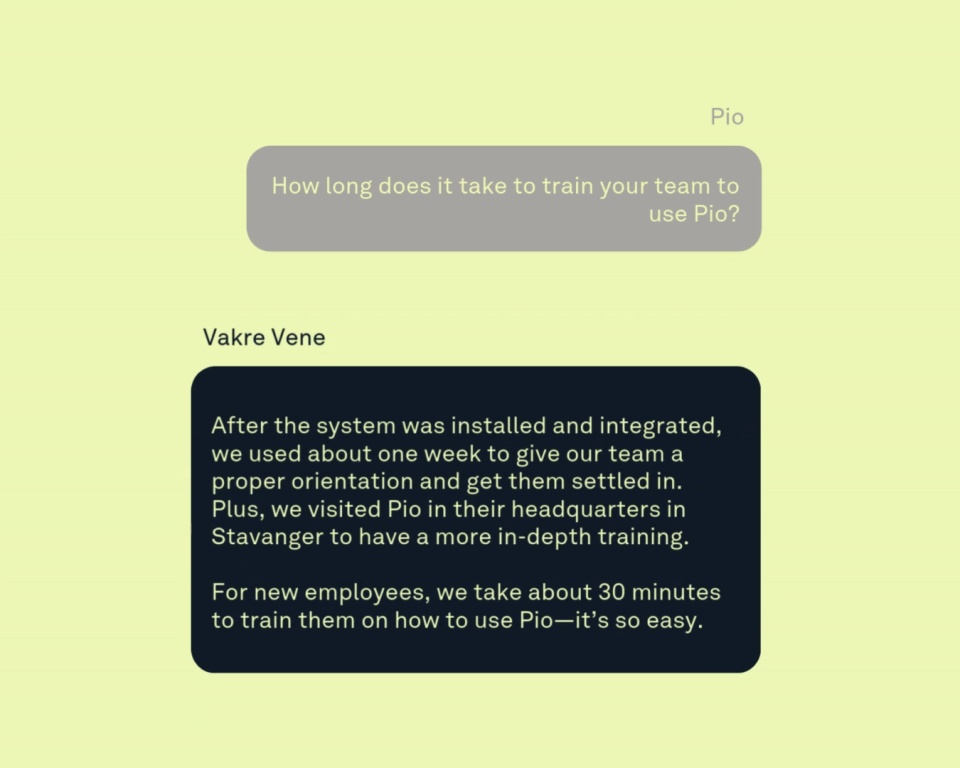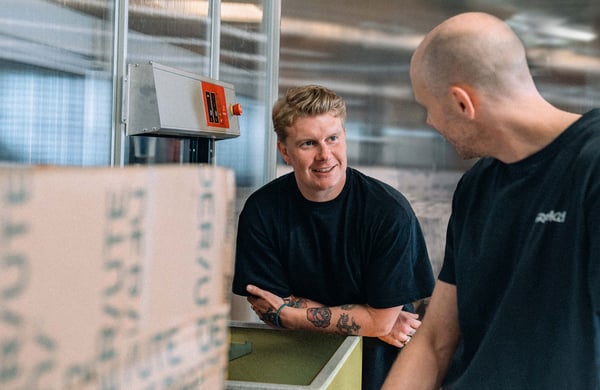And we get it. Warehouse automation is an emerging technology, especially for small-to-midsize businesses who may not have been able to afford it previously. So it makes sense that new territory comes with doubt and the desire to know more.
But instead of hearing it from us, we thought it would be better to hear the answers from our customers themselves. After all, they’re the ones using Pio every day, facing the same logistics challenges as the businesses who are looking into getting automation for their warehouse.
Here, we’ve got a Q&A session with Vakre Vene, a northern Norwegian business specializing in women’s fashion apparel. Hopefully this answers some of your most pressing questions. But of course, if you have any more, don’t hesitate to contact us.

Q: WHEN DID YOU GET PIO, AND WHAT’S ONE OF THE IMMEDIATE BENEFITS YOU FELT?
A: We got Pio a year and a half ago in the summer of 2022, and the best thing for us since then has been all the time we’ve gotten back. Instead of running all over the warehouse searching for products, we just wait at the port for the robots to bring the items.
Q: WHAT KIND OF ORDER VOLUME ARE YOU DEALING WITH?
A: In 2023, we sent about 120,000 orders, with an average of 2 SKUs per order. This weekend, we had around 1,000 orders, and we’ve already gotten all the orders sent out the door. Without Pio, we would have needed up to ten employees to make that happen, and still we might have needed double the time to get it all done. Now, we just have four people working.
Q: HAVE YOU HAD ANY MAJOR PROBLEMS WITH THE SYSTEM? SHUTDOWNS, BREAKDOWNS, ETC?
A: In the year and a half since we’ve had Pio, we’ve had about ten instances of system malfunction due to improper storage of items in the system by our employees. So we take ownership over that happening. Once, there was a battery issue with one of our robots. Pio sent a replacement and we got it sorted within two days. Plus, we have five robots total, so there wasn’t actually any system downtime—the other four robots made up for the one with the battery problem. And one time, the system was down for about an hour while we reoriented the robots, but Pio’s customer team was there to support us and make sure things were back up and running. That’s the extent of the issues we’ve had in the 18 months of using Pio. For us, it’s been pretty perfect.

Q: HOW LONG DOES IT TAKE TO TRAIN YOUR TEAM TO USE PIO?
A: After the system was installed and integrated, we used about one week to give our team a proper orientation and get them settled in. Plus, we visited Pio in their headquarters in Stavanger to have a more in-depth training. For new employees, we take about 30 minutes to train them on how to use Pio—it’s so easy.
Q: WHAT ABOUT AFTER TRAINING? IS THERE AN ADJUSTMENT PERIOD FOR WORKERS TO RAMP UP TO BEING ABLE TO FULFILL, SAY, 1000+ ORDERS A DAY?
A: There’s really not an adjustment period. The thing is, the system is so easy to use, understand, and handle. Fulfilling orders is the easiest part. It’s actually hard to make a mistake. I could probably teach you in about ten minutes, and you’d be as good as any member of our team.
Q: HOW TALL IS YOUR SPACE, IN ORDER TO ACCOMMODATE A PIO SYSTEM? HOW BIG IS YOUR SYSTEM?
A: Ours is not tall at all. About 10 feet, or around 3.5 meters. Our system is 2,000 bins. Our space isn’t big, but we’ve been able to expand and grow with Pio, without needing more room for additional inventory.
Q: HOW DOES PIO AFFECT YOUR LABOR NEEDS?
A: Now, we have six full-time workers doing logistics and fulfillment. Without Pio, we would have needed 15 people for the same amount of orders.
Q: WILL THE SYSTEM KEEP TRACK OF LOW INVENTORY? DOES IT TELL YOU WHAT AND WHEN TO RESTOCK?
A: We’re able to take out a full inventory report, and the Pio team also has access to full reports. Our industry is fashion, where things are always coming in and out quickly, so it’s essential for us to have access to that inventory report with Pio.






.jpg?width=600&name=Beauty-Welness-Pio-04743%20(1).jpg)